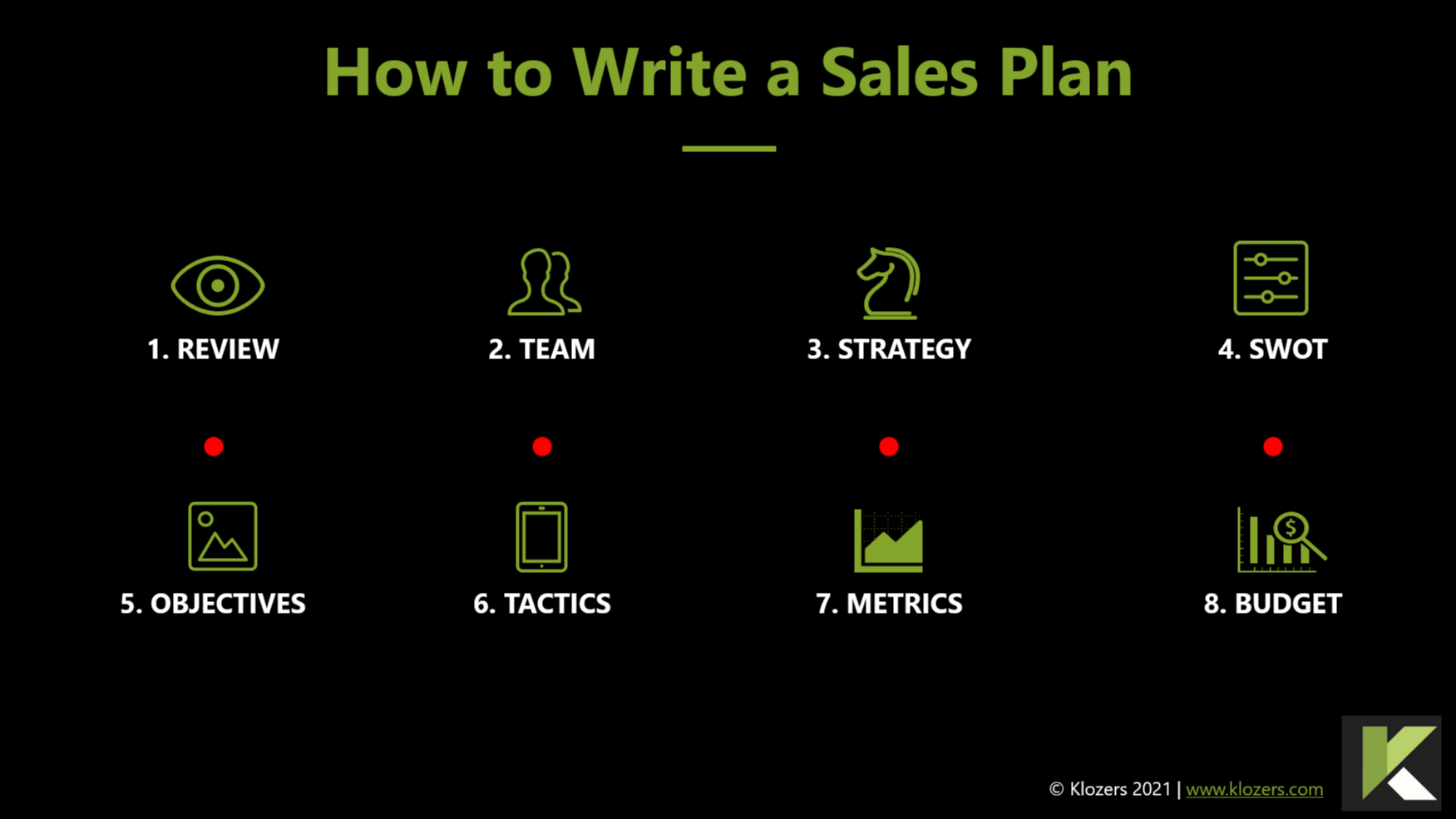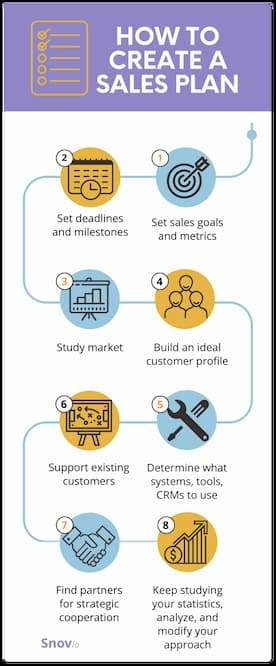Top 10 common (yet destructive) mistakes when creating a sales plan and how to avoid them
Here are some common mistakes sales teams make when they’re creating a sales plan template:
1. Not writing or updating your marketing plan
Even though it may be one segment of your wider business strategy, your marketing plan is probably the single most crucial element of it. It does not just allow you to build clear marketing goals, but it offers you the opportunity to create a well-researched, smart marketing outlay.
Without one, you will approach your sales strategy and conversion efforts blindly. That means you’ll see poor results, a lowered return on investments, and a lack of new customers.
2. Not establishing a marketing strategy
If you don’t have a well-thought-out marketing strategy in place for your business, your promotion, marketing, and advertising efforts are haphazard. An established marketing strategy helps you evaluate your market, identify your target audience, and choose suitable marketing vehicles for promoting your business.
A good deal of marketing strategy includes research and comparison shopping for ad rates. Without that in place, your marketing plans can be inefficient.
3. Not doing sufficient research
Market analysis is the key to learning about your customers and your competitors. It offers you insights that could drive better business strategy and planning. Like your business, good market research takes a bit of planning and strategy.
One false move could drive a great research project to the ground quicker than you can say “qualitative data gathering.”
4. Not getting stakeholders’ buy-in (not including Stakeholders in the sales planning process)
To fulfill customers' needs, the sales team must involve the concerned team to get things done. Stakeholders should be aware of the responsibilities and processes of each function in a company.
The sales team must know the responsibilities of the respective functions and limitations in working and assign the tasks accordingly. Proper communication must be made among the members to know the thought process and work as per the requirements.
Toward the end of the sales planning process, you must involve the stakeholders from departments that impact your results, like product and marketing. Doing so will result in an actionable and efficient sales planning process.
5. Focusing too heavily on big-budget marketing items
Creating a simple budget to guide your sales planning efforts can help you manage your resources and keep on track. A budget is a guide and does not have to confine an eager sales force or groundbreaking sales tactics.
Also, planning a budget in sales planning enables you to keep control of your resources instead of running your business in reaction to outside forces.
It’s recommended that you spend 7-8% of your gross revenue on advertising and marketing if you are producing less than $5 million a year in sales, and your net profit margin falls between 10-12%.
Most shop owners spend 3-4% on marketing, and with a defined marketing budget and organized plan, that will be enough.
6. Not tracking your marketing results
Most sales teams get tracking all wrong. It is not about collecting as many metrics as possible and throwing them into some marketing dashboard or spreadsheet. There will be more guesswork involved in creating your process.
If you track the data in real time, you can make smart decisions based on what is happening with the sales right now, not what occurred last week. To take advantage of the power of data integration, you can integrate Google Analytics with Salesforce or another CRM for even more insights into your marketing strategy.
Also, when you know how various actions impact your bottom line, you will understand what to change and structure the process so your team continuously reaches its goals.
7. Trying to do too much at once
Avoid doing many things at the same time when creating a sales plan. When determining gaps in your business, consider what your organization needs and what you might need in the future.
Determine the skills you feel your staff need to reach the goal. Assess the skills of your present employees. Once you have those details, you can train or hire new employees to fill the gaps.
8. Not considering the finer details
You must dive into the details of your sales strategy with a sales action plan. It must have a minimalistic but clean layout. The sales plan concentrates on the more concrete elements of accomplishing your sales goals.




